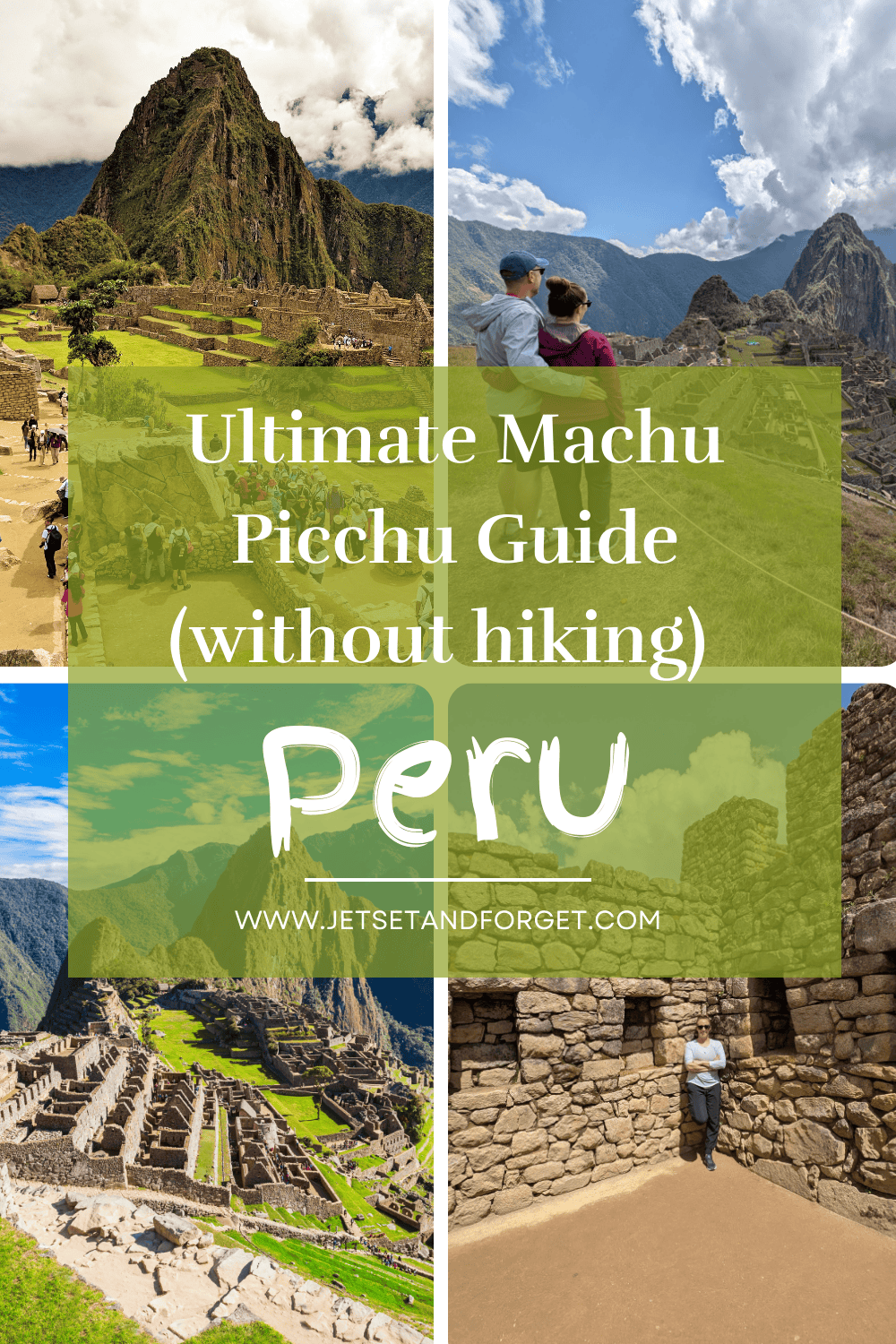Machu Picchu was always on my bucket list of places to visit. I had heard from other travelers that you can’t just go for a weekend, as you need time to adjust to the altitude.
I planned my trip around this one tip and spent 10 days traveling through Peru, during the dry season (in August) just to see this one ancient city.
Flying into Lima, I stayed for three days, then flew to Cusco. In Cusco, I got acclimated to the altitude for three days, then took the train to Aguas Calientes and stayed two nights, seeing Machu Pichu during my stay. I reversed back to Lima on the same route, and in total it took 10 days to “see” Machu Picchu.
Here is my guide on the best time to visit Machu Picchu if you prefer not to hike the Andes and want to take a slow approach to your visit!
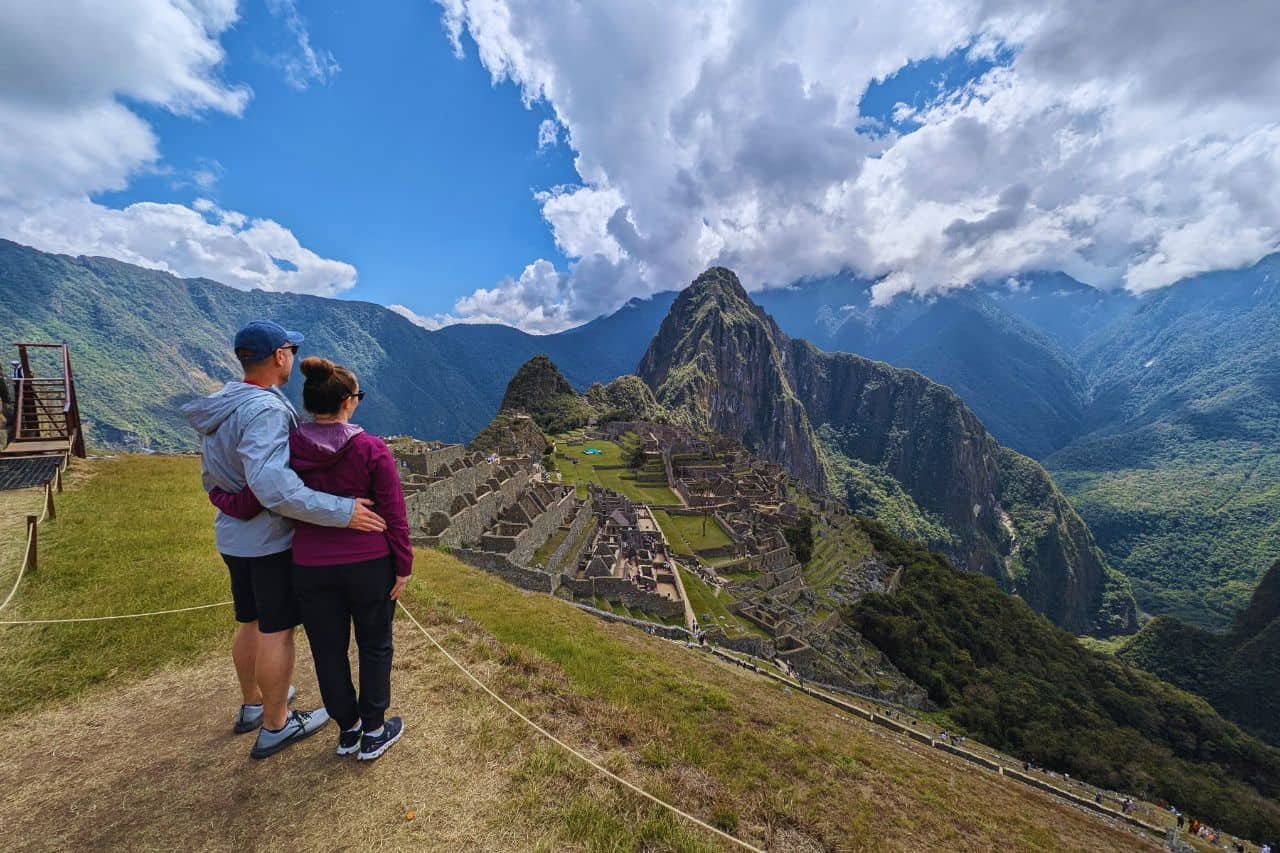
Basic Machu Picchu Facts
Machu Picchu is located high in the Andes, sitting at an altitude of 2,430 meters (7,972 feet) above sea level. It’s nestled between lush green mountains and towering peaks.
Aguas Calientes, the closest town, is about 25 minutes away by bus. This is where I stayed for two nights during my visit. You can also opt to hike directly to Machu Pichu (which takes about 4 days) however this is not my travel style.
In Peru, the official language is Spanish, but you’ll also hear Quechua, the language of the Incas.
Make sure to have some Peruvian Sol (PEN) on hand, as this is the local currency, and you’ll need it for things like buses, snacks, or souvenirs.
Machu Picchu is open daily from 6:00 AM to 5:30 PM, so plan accordingly to maximize your time. If you’re aiming for sunrise, you’ll want to catch one of the first buses from Aguas Calientes around 5:30 AM.
Why Visit Machu Picchu
Machu Picchu is a 15th-century Incan city, built for Emperor Pachacuti. It remained hidden for centuries, largely forgotten until American explorer
Hiram Bingham brought it to global attention in 1911. Today, it’s a UNESCO World Heritage site and one of the New Seven Wonders of the World!
Machu Picchu Weather
Machu Picchu has two main seasons: dry and rainy. Both offer unique experiences depending on what you’re looking for.
- Dry Season (May to September): This is the most popular time to visit, especially for trekking to Machu Picchu. The days are sunny and warm, but nights can get chilly. Temperatures range from 35°F (2°C) at night to 68°F (20°C) during the day. You’ll have clear skies for those stunning mountain views.
- Rainy Season (October to April): While the rainy season sees more downpours, it’s also when the landscape turns lush and green. It’s a quieter time to visit, with fewer crowds. Temperatures range from 41°F (5°C) to 64°F (18°C), but be prepared for occasional showers.
Best Time to Visit Machu Picchu
The best time to visit Machu Picchu largely depends on your weather preferences and tolerance for crowds.
I visited in August during the busiest time and it was extremely crowded. It was hard to take pictures without a million heads in the way and the bus to and from had an hour-long wait. However, the weather was gorgeous and there was no fog.
If you visit between October to April, the tourism crowds are much better however the weather conditions aren’t great. It can downpour at any time as it is the wet season. I hate traveling in the rain so that is why I opted to go during the busy season.
Ultimately, both seasons have their unique appeal, so it’s all about what kind of adventure you’re looking for.
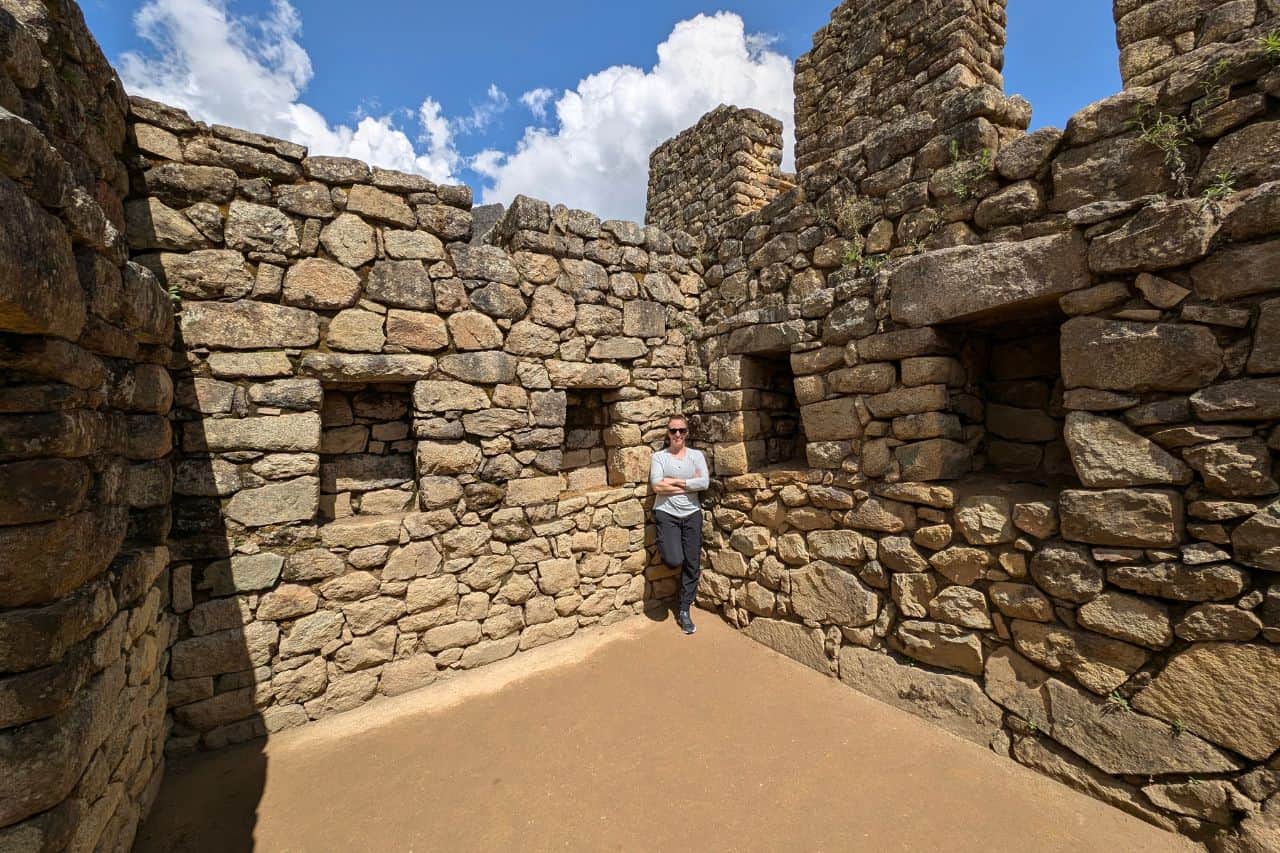
Altitude and How to Prepare
Machu Picchu sits at a high altitude, around 7,972 feet. If you’re coming from Cusco, which is even higher, you may already be somewhat acclimated.
However, altitude sickness can still be a concern, so make sure to drink lots of water, avoid alcohol, and consider bringing coca leaves or altitude sickness medication.
How to Manage Altitude Sickness
Managing altitude sickness in Peru is important due to its high elevation. Here are a few tips to help you acclimatize and minimize symptoms:
1. Take it Easy on Arrival
Avoid strenuous activities for the first 24-48 hours. Rest and allow your body to adjust to the high altitude.
2. Stay Hydrated
Drink plenty of water, as dehydration can worsen altitude sickness symptoms. Herbal teas, especially coca tea, are also commonly consumed in Cusco to help with acclimatization.
3. Avoid Alcohol and Heavy Meals
Alcohol can dehydrate you and make altitude symptoms worse. Stick to light, easily digestible meals while you adjust.
4. Use Oxygen or Medications
If symptoms persist, some hotels provide oxygen tanks for relief. You can also take medication like acetazolamide (Diamox), which helps prevent altitude sickness. Always consult your doctor before using medication.
5. Ascend Slowly
If you’re planning to hike or travel to higher elevations, ascend gradually to allow your body more time to adjust.
Taking these steps can help minimize discomfort and make your visit to Peru more enjoyable.
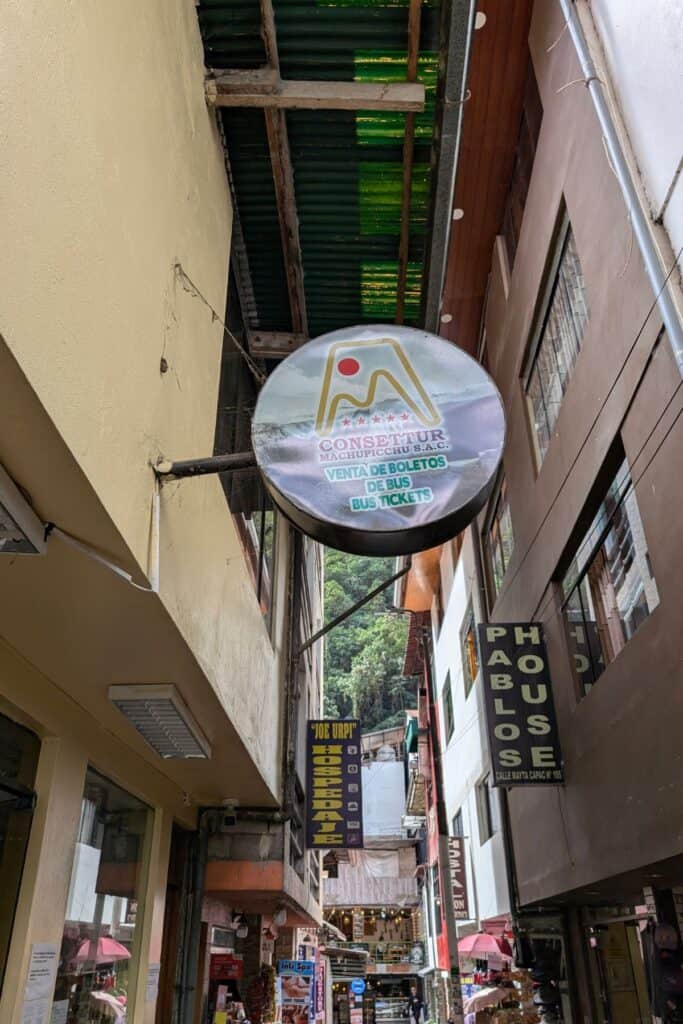
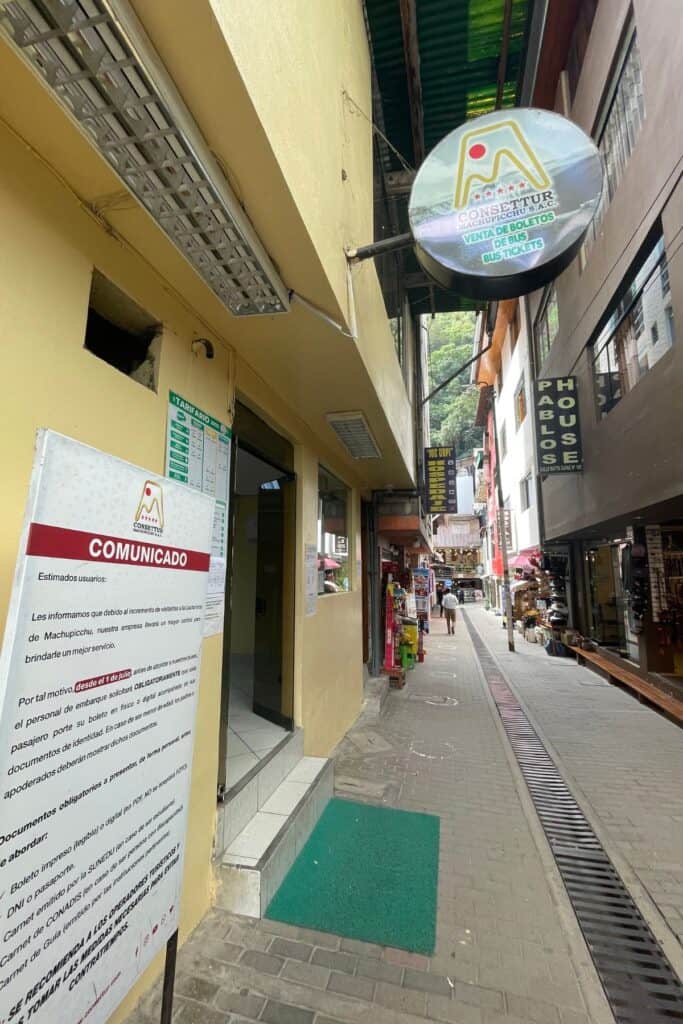
Getting to Machu Picchu from Aguas Calientes
If you stay overnight in Aguas Calientes, you will take a 25-minute bus ride to Machu Picchu. The images above are where to buy the tickets. Here is the location as you will not find it listed on Google.
- Bus Ride from Aguas Calientes: Buses run from early morning, starting around 5:30 AM, and leave every 10-15 minutes. The ride is short—about 20-30 minutes—but the winding road through the mountains offers spectacular views.
- Bus Tickets: You can buy your bus tickets in advance at the ticket office in Aguas Calientes. The cost is about $24 USD for a round trip and they take cash and credit card. The images above are the ticket office location.
- Wait times: In August we waited an hour to get on the bus, as well as an hour to get on the return bus.
Full Guide for Buying Tickets
Are you visiting Machu Picchu? Check out my FULL GUIDE on how to buy entry tickets to Machu Picchu as well as bus tickets from Aguas Calientes!
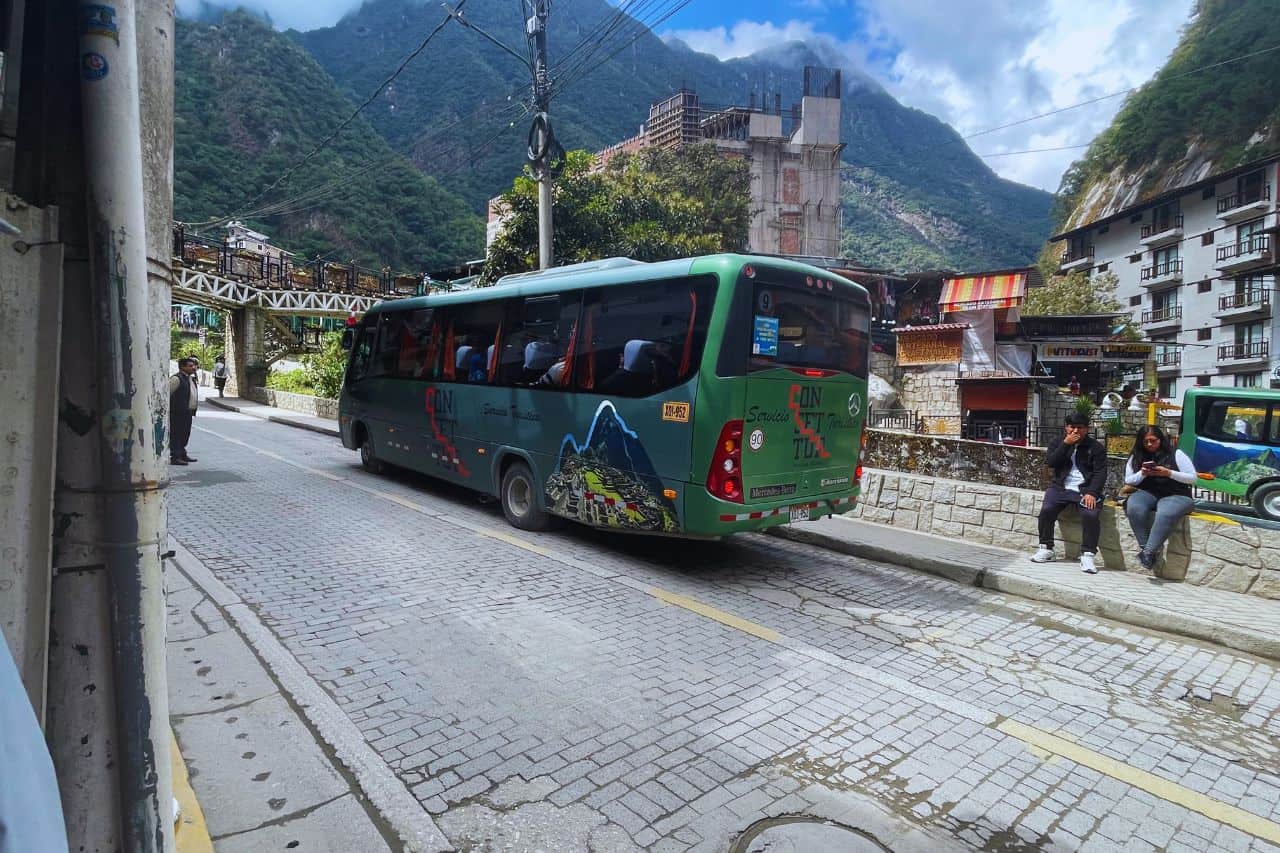
Three Ways to Reach Machu Picchu
There are a few different ways to reach Machu Picchu, depending on your preference. I took the train from Cusco to Aguas Calientes and stayed two nights.
If you try to take the train and the bus and see everything in one day, you will be exhausted.
Option 1: Take the Train to Aguas Calientes
If you’re coming from Cusco, you’ll most likely take a train to Aguas Calientes first. The train ride is scenic and takes about 3.5 hours.
The most popular options are PeruRail and IncaRail, with ticket prices ranging from $50 to $100 USD depending on the service.
From the rail station, you then still need to take the 25-minute bus ride mentioned above. Or you can opt to stay the night to rest before your day at Machu Picchu.
Aguas Calientes Accommodation Options:
- Hostel (Private Room Options): Supertramp Hostel
- Mid-Level Hotel: Escobedo’s Inn
- High-End Hotel: Sumaq Machu Picchu Hotel
Option 2: Hiking the Classic Inca Trail
For the adventurous traveler, the Inca Trail is a four-day trek that ends at Machu Picchu. It’s one of the most iconic hikes in the world, but it’s not for everyone, especially if you’re looking for a more leisurely visit.
A friend of mine hiked for 4 days during the best time to visit Machu Picchu and they seemed to enjoy it. I am not someone who sleeps in tents so that sort of hike is not for me!
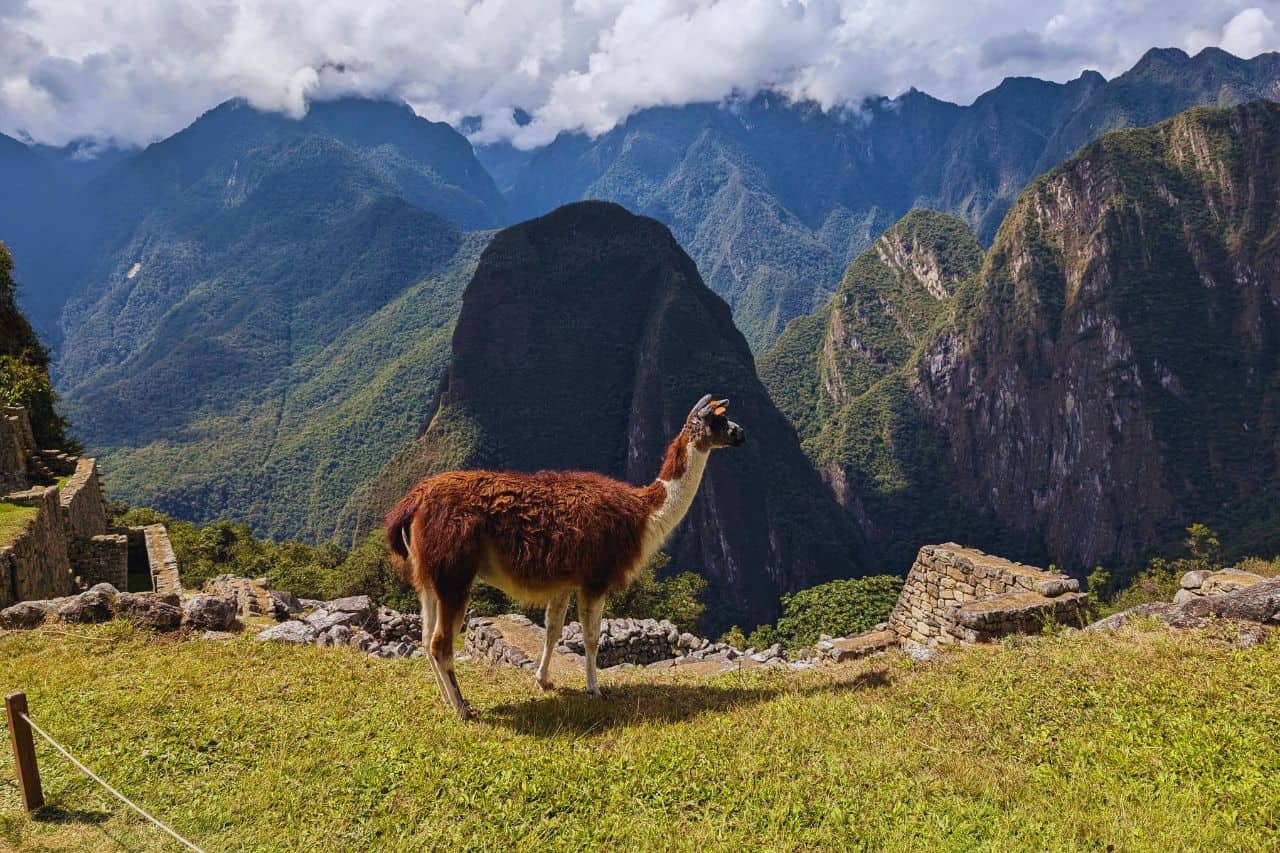
Option 3: Hike from Aguas Calientes
If you’re feeling active but don’t want to commit to the full Inca Trail, you can walk up to Machu Picchu from Aguas Calientes.
The hike takes about 1.5 to 2 hours, but keep in mind it’s steep and can be quite strenuous! I saw a lot of people struggling to make the walk while I flew by them on the bus, so be prepared.
Pro Tip:
Bring tissues everywhere to use as food napkins and toilet paper!! I buy a tube of them and keep the container in the side of my day pack whenever I am traveling. And don’t throw any paper items into the toilet!
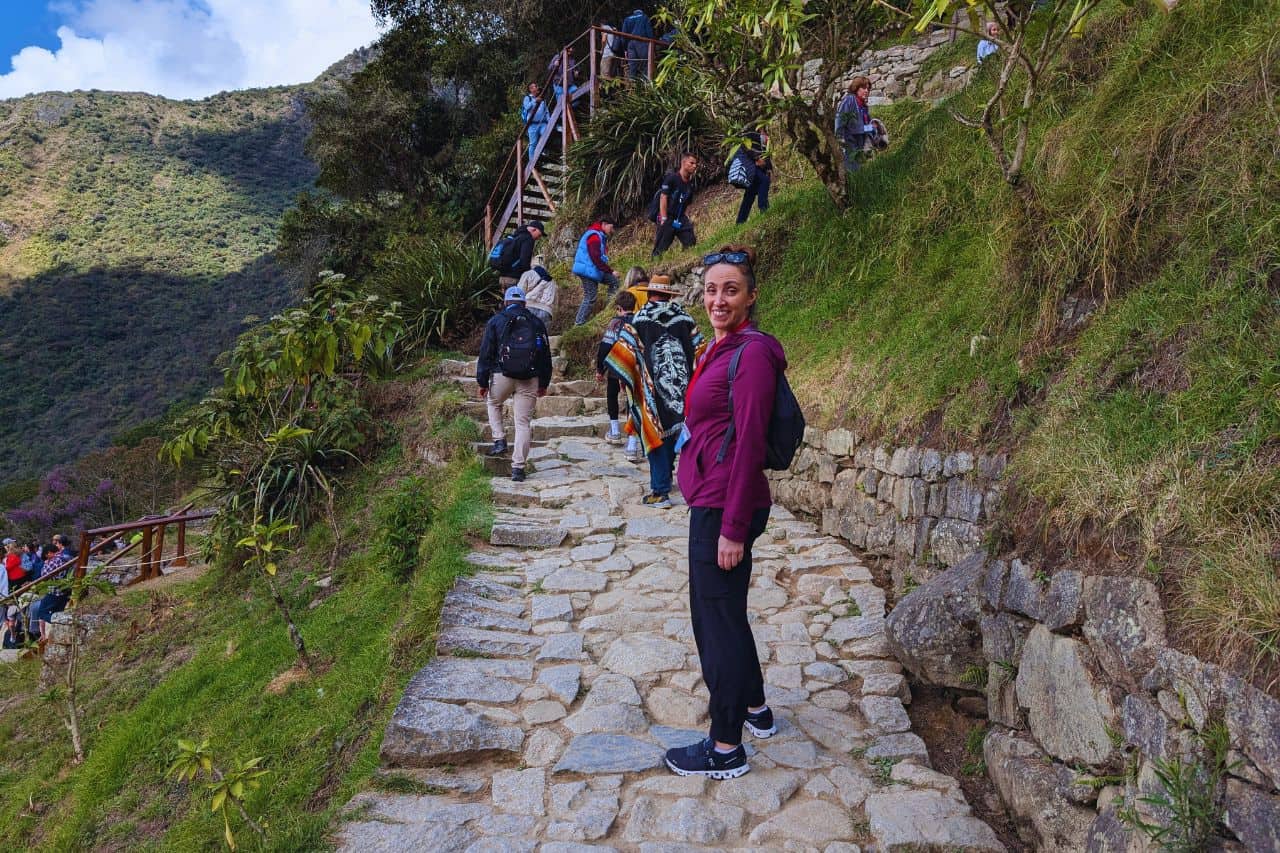
What to Pack for a One-Day Visit
You are allowed to bring a backpack to Machu Picchu and you will want to, as the weather can change in an instant so you need a place to put your jacket when the sun comes out!
Here are my other essentials:
- Your passport: You cannot enter Machu Picchu without it and they do not accept copies.
- Mosquito repellant: This is super important. My partner got eaten alive in August from the standing water in the line waiting to return to town. Buy a lotion versus a spray can so it’s easier to travel with.
- Comfortable walking shoes: You’ll be exploring ruins and hiking around uneven paths, so good shoes are essential. I like the Merrell hiking sneaker due to its grip. I mistakenly wore my On Clouds and wished I had my hiking shoes as the ground was uneven.
- Wear Layers: The weather was much cooler once the sun went down so wear layers to stay warm.
- Water: I go nowhere without my Hydroflask!
- Sunscreen and a hat: Even when it’s cloudy, the sun at high altitudes can be intense.
- Rain gear: Weather can change quickly in the Andes, so bring a lightweight rain jacket just in case.
- Snacks: You can bring snacks inside but you cannot consume them while in the ruins.
Free PDF Packing List
Sign up for my monthly newsletter and get a printable travel checklist. Not just the essentials, a FULL packing list for any trip!
3 Circuit Options at Machu Picchu
Machu Picchu offers three main visitor circuits, each providing a unique way to experience the ancient site’s beauty and history.
I visited Circuit 3 during my visit. Personally, it was not very “challenging” however it can be if you have mobility issues as there are a lot of stairs and uneven ground.
Here’s a breakdown of each circuit option, including the length, estimated duration, difficulty, ticket costs, and sights along the way.
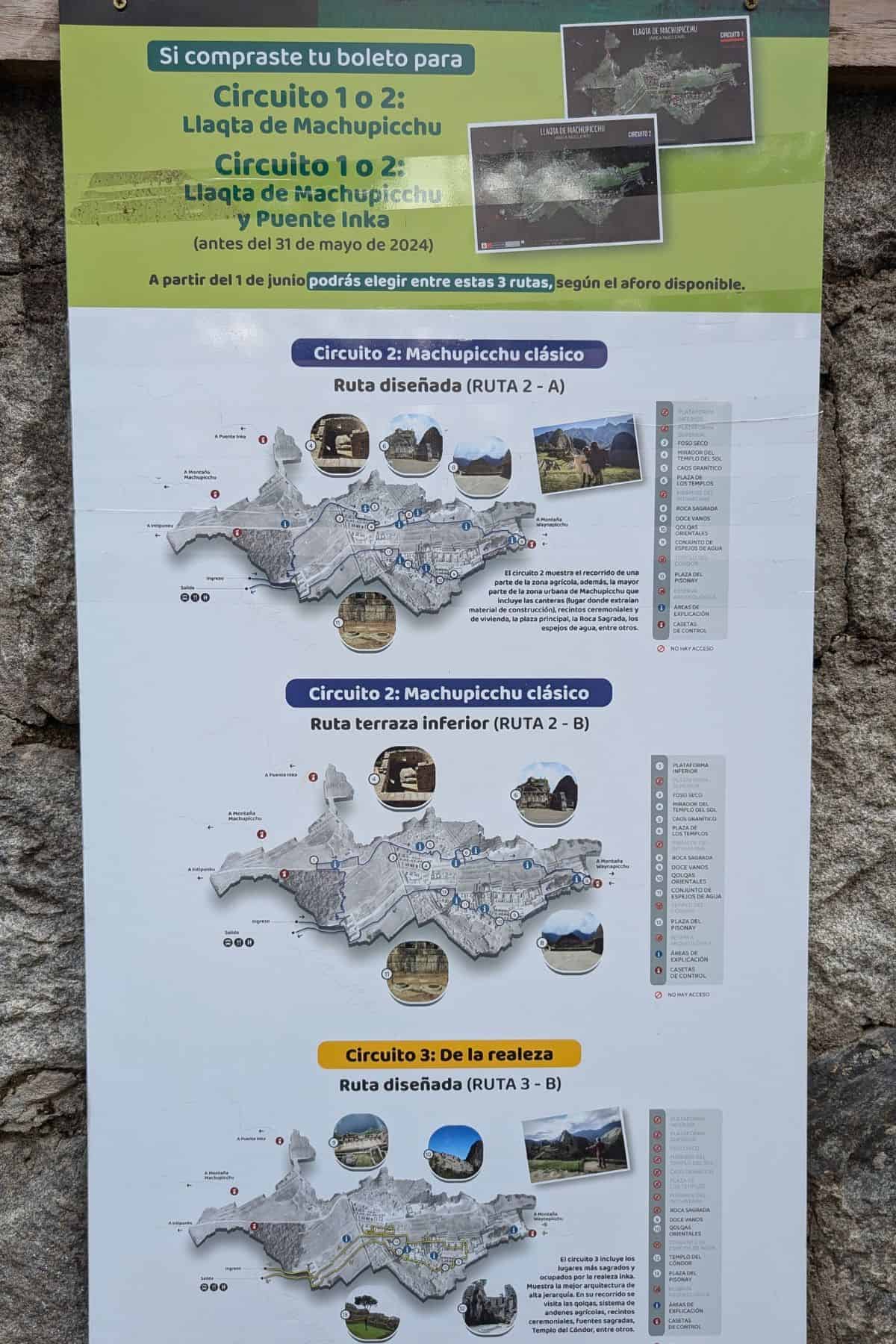
Circuit 1: The Lower Circuit
- Length: Approximately 1.2 miles (2 kilometers)
- Duration: Around 1.5 hours
- Difficulty: Easy to moderate
- Ticket Cost: Standard entry ticket, no additional cost
- Highlights: Main Temple, Sacred Rock, Temple of the Condor
The Lower Circuit is perfect if you’re looking for a shorter, less strenuous option. This route takes you through the heart of Machu Picchu’s central areas, letting you get up close to iconic ruins without needing to navigate many steep steps.
The Temple of the Condor is a highlight here, along with other main structures like the Sacred Rock and Main Temple.
This circuit is ideal for those who want a straightforward yet fulfilling visit to Machu Picchu.

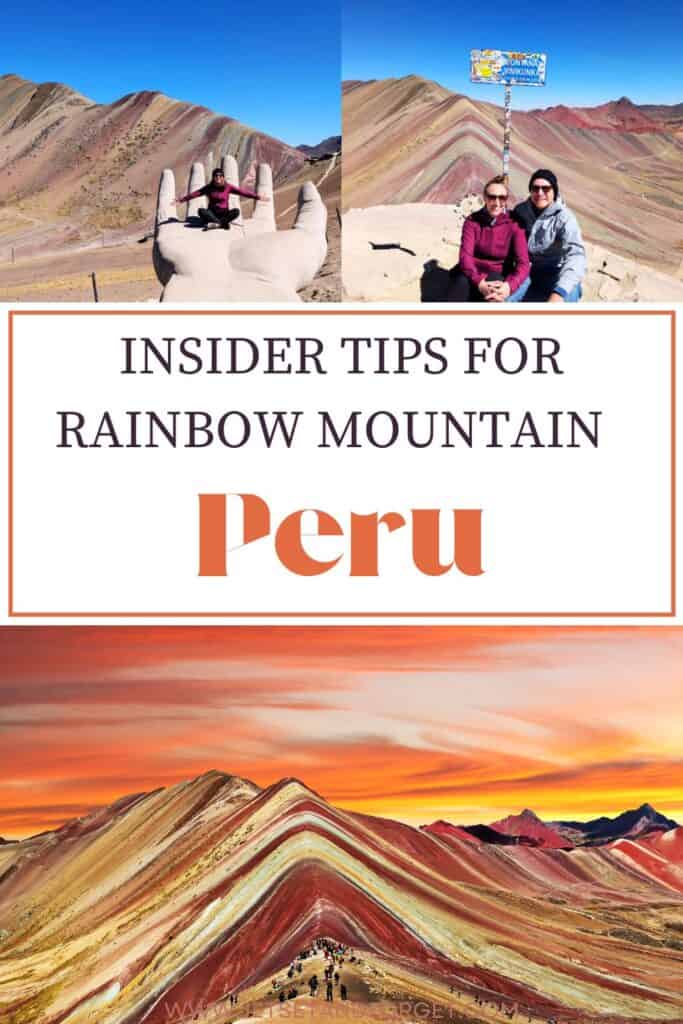
Circuit 2: The Upper and Lower Circuits Combination
- Length: Roughly 1.9 miles (3 kilometers)
- Duration: Around 2 hours
- Difficulty: Moderate
- Ticket Cost: Standard entry ticket, no additional cost
- Highlights: Temple of the Sun, House of the Guardian, Sacred Plaza, Royal Tomb
Circuit 2 gives you a bit of everything by covering both the upper and lower parts of Machu Picchu. You’ll start with some ascending paths, but it’s manageable for most visitors with average fitness.
This route includes the famous viewpoint at the House of the Guardian, where you can capture panoramic photos of the ancient city. Along the way, you’ll pass the Temple of the Sun, Sacred Plaza, and Royal Tomb, providing a complete Machu Picchu experience.
This circuit is excellent if you want to see more of the site’s highlights while still keeping a moderate pace.
Circuit 3: The Full Upper Circuit with Huayna Picchu or Machu Picchu Mountain as an Added Option
- Length: Varies based on the mountain option selected; 2.5–3 miles (4–5 kilometers)
- Duration: 3–4 hours
- Difficulty: Challenging
- Ticket Cost: Additional cost for entry to Huayna Picchu or Machu Picchu Mountain
- Highlights: Intipunku (Sun Gate), Inca Bridge, panoramic views from Huayna Picchu or Machu Picchu Mountain
Circuit 3 is for those seeking a more intense trek, as it combines the upper circuit with the option to hike either Huayna Picchu or Machu Picchu Mountain.
These mountains offer breathtaking, bird’s-eye views of the ruins, making the climb worth the effort. Huayna Picchu is shorter and steeper, while Machu Picchu Mountain has a longer, steadier ascent. Due to the additional hiking, this circuit requires better fitness and more time.
Each circuit requires a separate ticket, so be prepared to pay extra for these iconic views.
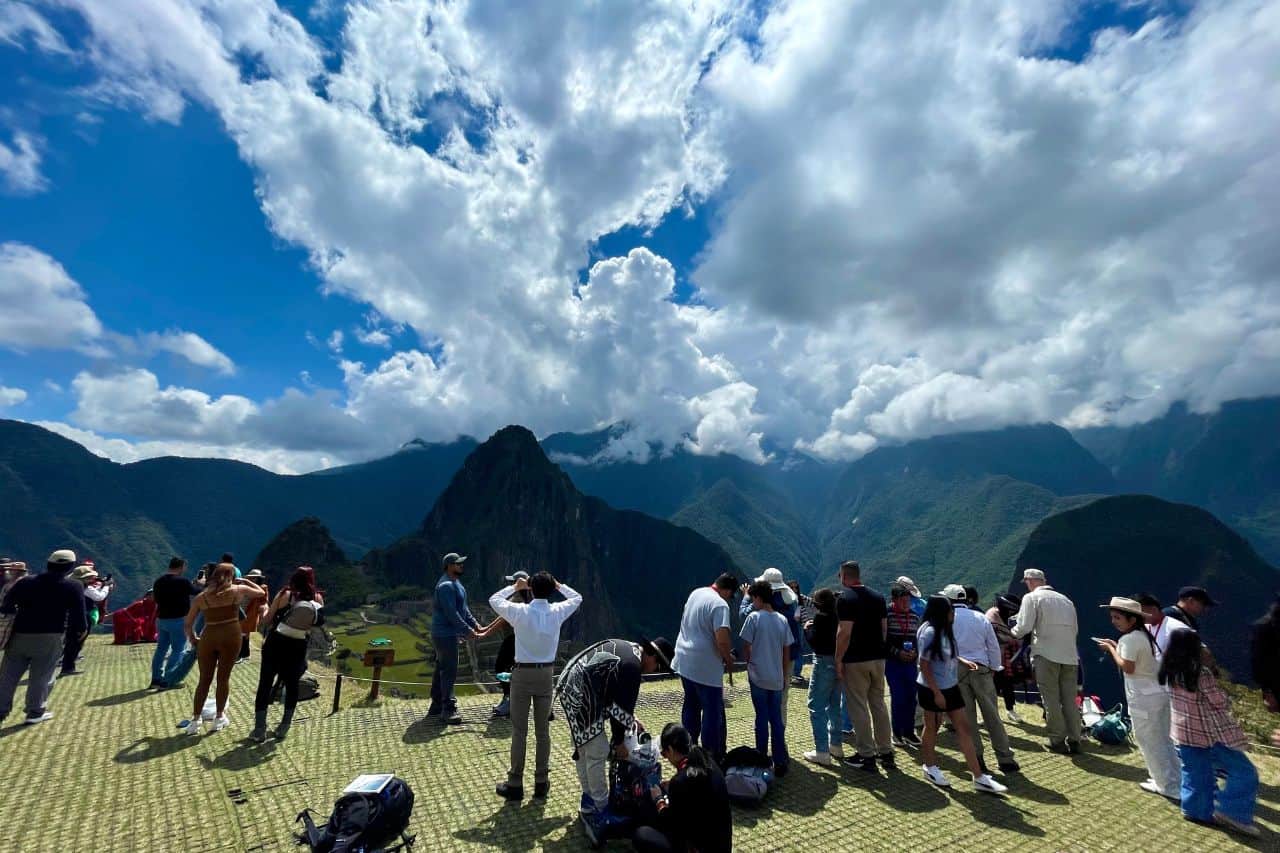
Machu Picchu Tickets: How Much and How to Buy
Entry to Machu Picchu is limited each day, so it’s important to buy your tickets in advance. I purchased mine 6 months in advance. Here are the options:
General Entrance Ticket: This costs around $45 USD and gives you access to the main ruins and all 3 circuits.
You then have the option to add on visiting either Huayna Picchu or Machu Picchu Mountain for an additional $10 USD. The entrance is about halfway through Circuit 3. I did not add on this option but I did see people coming in and out and they had walking sticks so it is more of a hike than an easy walk.
You can purchase tickets online through the Peruvian Ministry of Culture website. Be sure to bring your passport with you as you need to enter the site.
Pro Tip for Wifi:
To stay connected to the internet while traveling, I use an E-sim called Airalo. You can purchase the e-sim at any time, as long as your phone is E-sim compatible.
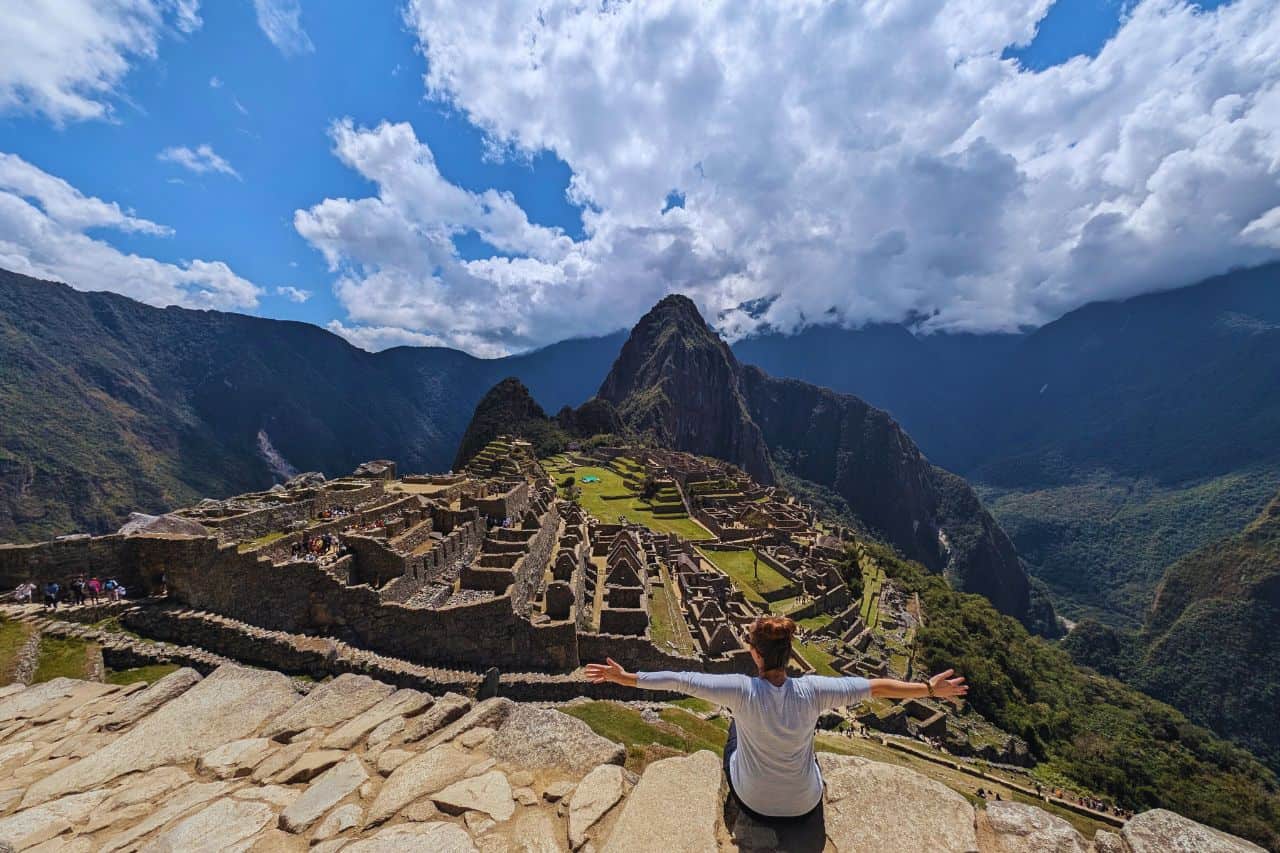
Final Thoughts on the Best Time to Visit Machu Picchu
Visiting Machu Picchu is truly an unforgettable experience. Whether you’re drawn by the breathtaking landscapes, the mysteries of Inca history, or simply the thrill of standing at one of the New Seven Wonders of the World, there’s nothing quite like it.
My journey taught me that planning is essential, especially for avoiding altitude sickness and maximizing time. It’s a place that requires you to slow down, adjust, and appreciate each moment, from the first glimpse of sunrise over the mountains to the peaceful silence of the ruins.
If Machu Picchu is on your bucket list, I highly recommend doing your research, choosing the season that fits your style, and giving yourself time to enjoy not only Machu Picchu but all that Peru has to offer.
Whether you’re hiking the Inca Trail, taking the train, or braving the rainy season, this adventure will leave you with memories that will last a lifetime.
Traveling Tips for Machu Picchu
Where is Machu Picchu located?
Machu Picchu is located in the Andes Mountains in Peru, near the town of Aguas Calientes.
What is the best time to visit Machu Picchu?
The dry season, from May to October, offers the best weather for visiting Machu Picchu.
How do you get to Machu Picchu from Cusco?
You can reach Machu Picchu by taking a train or bus from Cusco to Aguas Calientes.
Do I need a ticket to enter Machu Picchu?
Yes, tickets must be purchased in advance, as they sell out quickly, especially during peak season.
Is there a limit on how many visitors can enter Machu Picchu each day?
Yes, there is a daily cap on visitors, so booking in advance is highly recommended.
Are there bathrooms inside Machu Picchu?
No, the only bathrooms are outside the entrance. If necessary wear depends (not kidding) as you don’t want to walk all the way back to the entrance on a one-way trail.
How long does it take to hike up to Machu Picchu?
The hike up from Aguas Calientes to Machu Picchu takes about 1.5 to 2 hours.
Can I bring food and water into Machu Picchu?
Water is allowed, but food is generally restricted to protect the site. Bring snack bars and only consume them outside the entrance.
What should I wear when visiting Machu Picchu?
Wear lightweight, breathable clothing, and sturdy shoes, and bring a rain jacket for sudden weather changes.
Do I need to worry about altitude sickness at Machu Picchu?
Altitude sickness can be an issue; it’s best to acclimatize in Cusco before visiting.
Peru Travel Guides
- How to Visit Machu Picchu Without Hiking: A Full Guide
- How to Buy Machu Picchu Entry and Bus Tickets
- Aguas Calientes: Your Stop Over Before Machu Picchu
- Cusco: A Complete Guide to Exploring Peru’s Ancient Capital
- How to Take the Train to Machu Picchu from Cusco
- Insider Tips on Surviving Rainbow Mountain
- Alternative Nikkei Restaurant if Maido in Lima is Out of Your Budget
- Best Backpack for Woman When Visting Peru
- Complete Packing List for Woman
